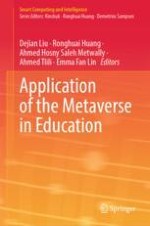2024 | OriginalPaper | Buchkapitel
8. Exploring Immersive Student Meetings in the Metaverse: Experiential Learning and Emergent Group Entitativity
verfasst von : Marvin Grabowski, Frank Steinicke, Sebastian Rings, Nale Lehmann-Willenbrock
Erschienen in: Application of the Metaverse in Education
Verlag: Springer Nature Singapore
Aktivieren Sie unsere intelligente Suche, um passende Fachinhalte oder Patente zu finden.
Wählen Sie Textabschnitte aus um mit Künstlicher Intelligenz passenden Patente zu finden. powered by
Markieren Sie Textabschnitte, um KI-gestützt weitere passende Inhalte zu finden. powered by
